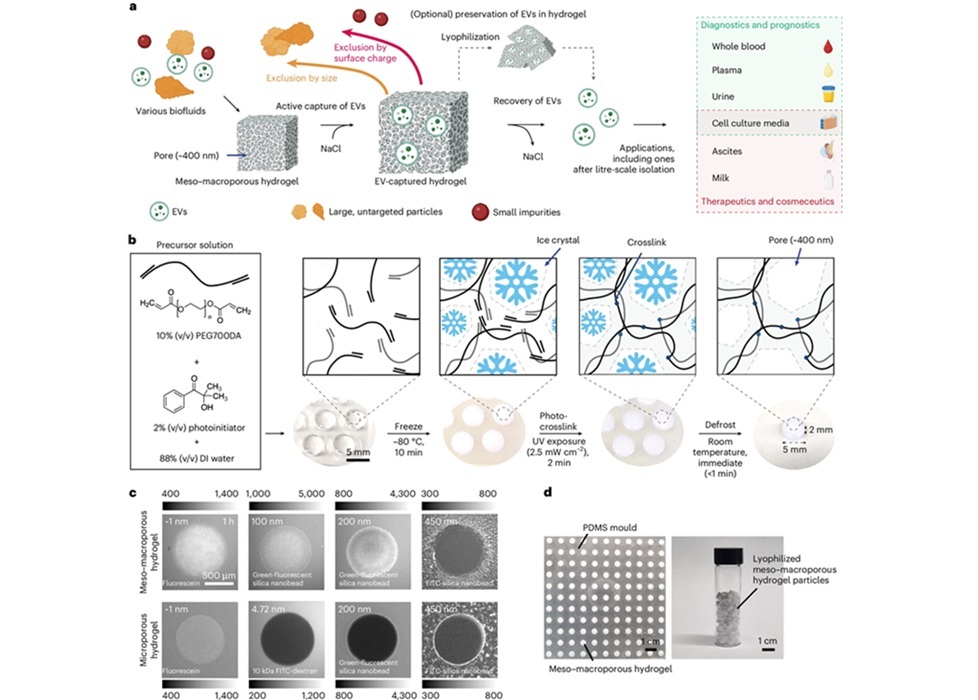Home Urine Collection for More Accurate Prostate Cancer Detection
|
By LabMedica International staff writers Posted on 09 Dec 2019 |

Image: Micrograph showing a prostate cancer (conventional adenocarcinoma) with perineural invasion (Photo courtesy of Wikimedia Commons)
A standardized sampling system enables men being tested for prostate cancer to collect a urine sample at home and mail it to a laboratory for analysis.
Currently, patient urine samples are collected after a digital rectal examination (DRE) of the prostate, which was thought necessary to boost the levels of prostatic secretions in the urine. The creators of the PUR (Prostate Urine Risk) test now report the development of a sampling system that provides indication of prostate cancer risk in urine samples collected at home, eliminating a visit to the clinic and the uncomfortable rectal examination.
The PUR test was established following evaluation of the cell-free expression of 167 genes in urine samples. Investigators at the University of East Anglia (Norwich, United Kingdom) identified a mathematical combination of 35 different genes that could be used to generate four prostate urine risk (PUR) signatures for predicting the probability of normal tissue (PUR-1), D'Amico low-risk (PUR-2), intermediate-risk (PUR-3), and high-risk (PUR-4) prostate cancer. Results revealed that application of PUR provided a net benefit over current clinical practice, since each PUR signature was significantly associated with its corresponding clinical category. Furthermore, PUR-4 status predicted the presence of clinically significant intermediate- or high-risk disease.
The investigators now describe an At Home Collection Kit that allows urine to be collected by patients at home and then posted to a laboratory for analysis by PUR methodology. The collection tubes contained a commercial preservative, which allowed samples to be maintained at room temperature without loss of RNA quality. A group of 14 participants were provided with an At Home Collection Kit, and instructions. Results of their home urine samples, taken first thing in the morning were compared to samples collected after a digital rectal examination.
At the laboratory, harvest of cell-free RNA using a novel high-volume vacuum extraction method increased total RNA yields, improved the detection sensitivity of prostate-cancer-specific transcripts by RT-PCR, and enabled extraction of RNA from historic frozen urine samples. Thus, RNA yields and quality were comparable to those for post digital rectal examination urine.
The investigators suggested that this method also has the potential to be adapted for the development of home-collection tests for bladder or kidney cancer.
Senior author Dr Jeremy Clark, a senior researcher at the University of East Anglia, said, "Prostate cancer is the most common cancer in men in the United Kingdom. It usually develops slowly and the majority of cancers will not require treatment in a man's lifetime. However, doctors struggle to predict which tumors will become aggressive, making it hard to decide on treatment for many men. The most commonly used tests for prostate cancer include blood tests, a physical examination known as a digital rectal examination (DRE), an MRI scan or a biopsy. We developed the PUR test, which looks at gene expression in urine samples and provides vital information about whether a cancer is aggressive or “low risk”. Because the prostate is constantly secreting, the collection of urine from men's first urination of the day means that the biomarker levels from the prostate are much higher and more consistent, so this is a great improvement. Being able to simply provide a urine sample at home and post a sample off for analysis could really revolutionize diagnosis. It means that men would not have to undergo a digital rectal examination, so it would be much less stressful and should result in a lot more patients being tested."
The At Home Collection Kit for prostate urinalysis was described in the November 29, 2019, online edition of the journal BioTechniques.
Related Links:
University of East Anglia
Currently, patient urine samples are collected after a digital rectal examination (DRE) of the prostate, which was thought necessary to boost the levels of prostatic secretions in the urine. The creators of the PUR (Prostate Urine Risk) test now report the development of a sampling system that provides indication of prostate cancer risk in urine samples collected at home, eliminating a visit to the clinic and the uncomfortable rectal examination.
The PUR test was established following evaluation of the cell-free expression of 167 genes in urine samples. Investigators at the University of East Anglia (Norwich, United Kingdom) identified a mathematical combination of 35 different genes that could be used to generate four prostate urine risk (PUR) signatures for predicting the probability of normal tissue (PUR-1), D'Amico low-risk (PUR-2), intermediate-risk (PUR-3), and high-risk (PUR-4) prostate cancer. Results revealed that application of PUR provided a net benefit over current clinical practice, since each PUR signature was significantly associated with its corresponding clinical category. Furthermore, PUR-4 status predicted the presence of clinically significant intermediate- or high-risk disease.
The investigators now describe an At Home Collection Kit that allows urine to be collected by patients at home and then posted to a laboratory for analysis by PUR methodology. The collection tubes contained a commercial preservative, which allowed samples to be maintained at room temperature without loss of RNA quality. A group of 14 participants were provided with an At Home Collection Kit, and instructions. Results of their home urine samples, taken first thing in the morning were compared to samples collected after a digital rectal examination.
At the laboratory, harvest of cell-free RNA using a novel high-volume vacuum extraction method increased total RNA yields, improved the detection sensitivity of prostate-cancer-specific transcripts by RT-PCR, and enabled extraction of RNA from historic frozen urine samples. Thus, RNA yields and quality were comparable to those for post digital rectal examination urine.
The investigators suggested that this method also has the potential to be adapted for the development of home-collection tests for bladder or kidney cancer.
Senior author Dr Jeremy Clark, a senior researcher at the University of East Anglia, said, "Prostate cancer is the most common cancer in men in the United Kingdom. It usually develops slowly and the majority of cancers will not require treatment in a man's lifetime. However, doctors struggle to predict which tumors will become aggressive, making it hard to decide on treatment for many men. The most commonly used tests for prostate cancer include blood tests, a physical examination known as a digital rectal examination (DRE), an MRI scan or a biopsy. We developed the PUR test, which looks at gene expression in urine samples and provides vital information about whether a cancer is aggressive or “low risk”. Because the prostate is constantly secreting, the collection of urine from men's first urination of the day means that the biomarker levels from the prostate are much higher and more consistent, so this is a great improvement. Being able to simply provide a urine sample at home and post a sample off for analysis could really revolutionize diagnosis. It means that men would not have to undergo a digital rectal examination, so it would be much less stressful and should result in a lot more patients being tested."
The At Home Collection Kit for prostate urinalysis was described in the November 29, 2019, online edition of the journal BioTechniques.
Related Links:
University of East Anglia
Latest Technology News
- AI Saliva Sensor Enables Early Detection of Head and Neck Cancer
- AI-Powered Biosensor Technology to Enable Breath Test for Lung Cancer Detection
- AI Model Achieves Breakthrough Accuracy in Ovarian Cancer Detection
- Portable Biosensor Diagnoses Psychiatric Disorders Using Saliva Samples
- Cell-Sorting Device Uses Electromagnetic Levitation to Precisely Direct Cell Movement

- Embedded GPU Platform Enables Rapid Blood Profiling for POC Diagnostics
- Viral Biosensor Test Simultaneously Detects Hepatitis and HIV
- Acoustofluidic Device to Transform Point-Of-Care sEV-Based Diagnostics
- AI Algorithm Assesses Progressive Decline in Kidney Function
- Taste-Based Influenza Test Could Replace Nasal Swabs with Chewing Gum
- 3D Micro-Printed Sensors to Advance On-Chip Biosensing for Early Disease Detection
- Hybrid Pipette Combines Manual Control with Fast Electronic Aliquoting
Channels
Clinical Chemistry
view channel
Mismatch Between Two Common Kidney Function Tests Indicates Serious Health Problems
Creatinine has long been the standard for measuring kidney filtration, while cystatin C — a protein produced by all human cells — has been recommended as a complementary marker because it is influenced... Read more
VOCs Show Promise for Early Multi-Cancer Detection
Early cancer detection is critical to improving survival rates, but most current screening methods focus on individual cancer types and often involve invasive procedures. This makes it difficult to identify... Read moreHematology
view channel
Platelet Activity Blood Test in Middle Age Could Identify Early Alzheimer’s Risk
Early detection of Alzheimer’s disease remains one of the biggest unmet needs in neurology, particularly because the biological changes underlying the disorder begin decades before memory symptoms appear.... Read more
Microvesicles Measurement Could Detect Vascular Injury in Sickle Cell Disease Patients
Assessing disease severity in sickle cell disease (SCD) remains challenging, especially when trying to predict hemolysis, vascular injury, and risk of complications such as vaso-occlusive crises.... Read more
ADLM’s New Coagulation Testing Guidance to Improve Care for Patients on Blood Thinners
Direct oral anticoagulants (DOACs) are one of the most common types of blood thinners. Patients take them to prevent a host of complications that could arise from blood clotting, including stroke, deep... Read moreImmunology
view channel
Chip Captures Cancer Cells from Blood to Help Select Right Breast Cancer Treatment
Ductal carcinoma in situ (DCIS) accounts for about a quarter of all breast cancer cases and generally carries a good prognosis. This non-invasive form of the disease may or may not become life-threatening.... Read more
Blood-Based Liquid Biopsy Model Analyzes Immunotherapy Effectiveness
Immunotherapy has revolutionized cancer care by harnessing the immune system to fight tumors, yet predicting who will benefit remains a major challenge. Many patients undergo costly and taxing treatment... Read moreMicrobiology
view channel
15-Minute Blood Test Diagnoses Life-Threatening Infections in Children
Distinguishing minor childhood illnesses from potentially life-threatening infections such as sepsis or meningitis remains a major challenge in emergency care. Traditional tests can take hours, leaving... Read more
High-Throughput Enteric Panels Detect Multiple GI Bacterial Infections from Single Stool Swab Sample
Gastrointestinal (GI) infections are among the most common causes of illness worldwide, leading to over 1.7 million deaths annually and placing a heavy burden on healthcare systems. Conventional diagnostic... Read morePathology
view channel
Simple Optical Microscopy Method Reveals Hidden Structures in Remarkable Detail
Understanding how microscopic fibers are organized in human tissues is key to revealing how organs function and how diseases disrupt them. However, these fiber networks have remained difficult to visualize... Read more
Hydrogel-Based Technology Isolates Extracellular Vesicles for Early Disease Diagnosis
Isolating extracellular vesicles (EVs) from biological fluids is essential for early diagnosis, therapeutic development, and precision medicine. However, traditional EV-isolation methods rely on ultra... Read moreTechnology
view channel
AI Saliva Sensor Enables Early Detection of Head and Neck Cancer
Early detection of head and neck cancer remains difficult because the disease produces few or no symptoms in its earliest stages, and lesions often lie deep within the head or neck, where biopsy or endoscopy... Read more
AI-Powered Biosensor Technology to Enable Breath Test for Lung Cancer Detection
Detecting lung cancer early remains one of the biggest challenges in oncology, largely because current tools are invasive, expensive, or unable to identify the disease in its earliest phases.... Read moreIndustry
view channel
Abbott Acquires Cancer-Screening Company Exact Sciences
Abbott (Abbott Park, IL, USA) has entered into a definitive agreement to acquire Exact Sciences (Madison, WI, USA), enabling it to enter and lead in fast-growing cancer diagnostics segments.... Read more

























